Introduction:
When the top layer of concrete shrinks, random cracks or fissures appear on the surface, known as crazing in concrete floors; conditions and curing techniques used when the concrete is set out, as well as how it is completed, are to blame. They cause the immediate surface to shrink differently than the underlying concrete because they are linked to early surface drying or chilling. When the surface was exposed during placement to low humidity, high air or concrete temperature, scorching sun, or any combination of these, the concrete surface dried up, which is what caused crazing.
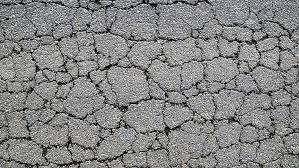
Fig1: Crazing of Concrete
Courtesy: engineeringnews.co.za
What is Crazing of Concrete?
Crazing on concrete is a physical crack that appears as small random cracks or fissures on the surface of the concrete or mortar. These are also known as a shallow map or pattern cracking, or alligator cracking because they are detected as irregular hexagonal patches surrounded by fractures ranging in length from 40 mm to 30 mm. These fissures are often less than 3 mm deep and are observed on steel-troweled surfaces. These results from drying shrinkage and moisture loss from the concrete surface.
It should be emphasized that crazing concrete has no effect on the structure’s longevity or strength, but it does look terrible physically because these flaws are often rather noticeable. Suppose these fractures are not treated over an extended period. In that case, they can grow into larger fissures that allow water or moisture to enter deep into the structure, resulting in metal corrosion. Crazing concrete may appear unsightly, and the cracks may gather dirt or dust, but it has no negative effects on the building.
Crazing is forming a network of small random fractures on the surface of concrete produced by surface layer shrinkage. Plastic and drying shrinkage cracks are two different types of cracks related to craze cracking. When concrete is still plastic, plastic shrinkage cracking occurs.
Causes of Concrete Crazing:
There are several causes of crazing concrete. Crazing can emerge on unprotected and concrete surfaces in direct contact with the formwork.
1. Improper Curing:
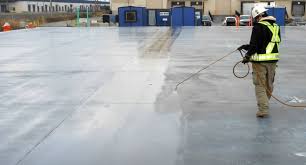
Fig2: Improper Curing
Courtesy: civildigital.com
When concrete is improperly cured and allowed to dry, the necessary amount of water is not delivered to it, which causes water to evaporate off the concrete’s surface rapidly. The dried-out concrete absorbs more water at this phase. Consequently, the concrete’s surface started to crack. Certain circumstances develop when concrete is poured in places with low humidity, swift wind, direct sunlight, and uneven water distribution across the surface. Most of the time, it happens due to the project’s employees being careless.
2. Extreme Vibration:
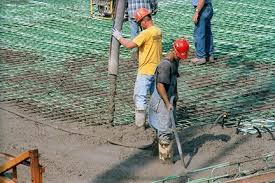
Fig3: Extreme Vibration
Courtesy: blog.kryton.com
Increasing the vibrations while the concrete is falling causes the cement slurry to rise to the surface, leaving metal and gravel at the bottom. When the cement at the top dries, it forms crazing concrete. Many modern concrete mixture vibrators may be set to a precise RPM to counteract the cause of crazing concrete. Previously, when physical effort was used to set the concrete rather than electric vibrators, there was a considerable risk of crazing on the concrete’s surface. Still, modern tools have helped to avoid this to a large extent.
3. Excess Water-Cement Ratio:
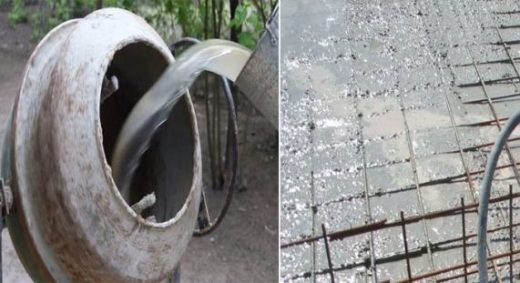
Fig3: Excess Water Cement Ratio
Courtesy: civiconcept.com
An excess of water causes crazing. Excess water settles at the top of the concrete, moving the cement particle and forming a thin layer on the surface. It dries out and produces crazy.
4. Unskilled Manpower:
Masonry abilities are another component that contributes to crazing concrete. Frequent trowel actions to quickly settle the concrete can bring the cement to the top. As a result, there is water bleeding. This little blunder also results in the formation of surface fissures.
5. Inadequate Finishing:
Finishing with bleed water on the surface or using a steel trowel because the trowel’s smooth surface raises excessive amounts of water and cement particles. A weak surface layer with a high water-to-cement ratio prone to crazing will be produced using a bull float or darby with bleed water on the surface. Crazing surfaces are frequently caused by sprinkling cement on the surface to dry out the bleed water. As a result, fines are concentrated on the surface.
6. Intermittent Curing:
Intermittent curing is the process of allowing the concrete to dry for a while. The surface of the concrete tends to absorb water when it is wet, which causes crazing to occur on the surface.
7. Carbonation:
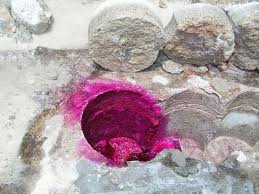
Fig4: Carbonation
Courtesy: onlinecivil.net
Concrete reacts with carbon dioxide in the air or carbon monoxide released by machines or automobiles when the area is not sufficiently aired and is allowed to dry. It causes the top layer to shrink, which leads to cracks that appear as soon as the concrete starts to set. This chemical reaction occurs in unclean, crowded, and poorly ventilated areas.
Other causes include when the building mortar is excessively moist or rich or when proper curing needs to occur. It could cause shrinking. Additionally, it causes crazing concrete when too fine sand is used, and rendering or plastering is done after a long gap after concrete casting.
Prevention Measures for Crazing of Concrete:
- Concrete retains moisture and hydrates more quickly when curing is started properly and early. Crazing of concrete surfaces may be avoided by maintaining a constant supply of moisture in the concrete.
- By applying a curing substance to the surface, crazing and the quick evaporation of moisture from the concrete surface are both avoided.
- Use a low water-to-cement ratio while maintaining proper compaction.
- Use air-entrained concrete with a mild slump that improves workability. In new concrete, air entrainment lowers the bleeding pace and lessens the chance of crazing.
- Concrete with a low slump A weak surface layer is produced by the concrete mixture segregating when the slump is higher.
- Never spray dry cement or a cement-and-fine-sand combination on the surface of plastic concrete to avoid the appearance of crazing.
- A significant moisture differential between the inner and exterior of the concrete should be avoided.
- Avoid using finishing mixtures that are too rich; no richer than 1:3.
- Avoid excessive vibration, which might push too much slurry to the top or side.
- Avoid using steel floats and trowels as little as possible on the surface.
- Don’t use grouting techniques or clean cement paste to massage the surface.
Treatment of Crazing in Concrete:
- Glazing concrete surfaces consistently are one of the finest strategies for eliminating or reducing the danger of cracking over the concrete surface.
- Applying epoxy and silica sand to concrete slabs creates a monolithic look that is also crack-free.
- It does affect the appearance of the surface and improves the color. Furthermore, the excess surface may be removed afterward with any resurfacing solution.
- Polishing the surface where visible cracks are another extremely beneficial and practical treatment. Polishing finally grinds the upper surface layer where the crazing pattern forms, removing fissures that are often just 2-3 mm thick.
- Curing monomolecular chemicals can also be used on the surface to prevent fast moisture evaporation from the cement and aid in the fight against crazing concrete.
- If the crazing is not too severe, grout can also be used to fill minor cracks.
Conclusion:
Concrete crazing is a network of small fractures that do not extend deeply under the surface due to modest surface shrinkage. Although crazing cracks can be unsightly and may gather dirt, they are not structurally serious and do not generally signify the onset of future damage. When concrete is only starting to build strength, climatic circumstances, particularly the ratio throughout the drying amount in an extremely wetting and drying cycle, are a major cause of crazing.
References:
1. “What Is Crazing in Concrete? Its Causes and Preventive Measures.” What Is Crazing in Concrete? Its Causes and Preventive Measures – Mastercivilengineer, 4 Apr. 2021, mastercivilengineer.com/what-is-crazing-in-concrete-its-causes-and-preventive-measures.
2. “What Is Concrete Crazing and How Can We Avoid It?” Constro Facilitator, 4 Mar. 2021, constrofacilitator.com/what-is-concrete-crazing-and-how-can-we-avoid-it.
3. “What Is Concrete Crazing? | West Coast Epoxy.” West Coast Epoxy | Epoxy and Concrete Flooring Solutions, 15 Oct. 2020, westcoastepoxy.com/epoxy-flooring/crazing-in-concrete.
4. Expert, Flooring. “Concrete Crazing and Curling – How to Avoid and Repair?” Concrete Contractors, 5 Dec. 2021, duomit.com/concrete-crazing-and-curling.
5. “What Is Crazing? | California Custom Coatings.” California Custom Coatings | Decorative Flooring Solutions, 13 Dec. 2018, californiacustomcoatings.com/what-is-crazing.
6. “Crazing Concrete Surfaces — What, Why, and How? – Nevada Ready Mix.” Crazing Concrete Surfaces — What, Why, & How? – Nevada Ready Mix, www.nevadareadymix.com/concrete-tips/crazing-concrete-surfaces. Accessed 21 Jan. 2023.
If you have a query, you can ask a question here.


